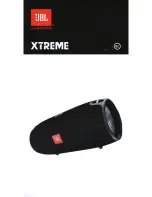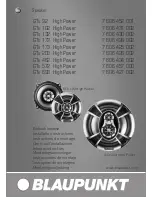
6
By overlaying the width and length graphs, we can see
the intersection points of the lines. These points represent
where the centers of the speakers should be placed to mini-
mize nodes and anti-nodes.
(14 X 12 = 168) and divide the result by odd numbers.
168 divided by 3 is 56 (all to the nearest inch)
168 divided by 5 is 34
168 divided by 7 is 24
168 divided by 9 is 19
168 divided by 11 is 15
The results of these odd number divisions are the dis-
tances in inches that the center of each speaker can be placed
into the width of the room, away from the side wall, to mini-
mize nodes and anti-nodes.
Now we can graph these odd dimensions distances on a
drawing of the room.
15
24
34
56
56
34
24
15
As you can see, we now have quite a few intersections to
choose from in our example room. Some of the intersections
in your room will probably be eliminated by aesthetic or
room function considerations, so you probably will not have
as many.
As you try different placements for your speakers, always
place both speakers on the same length line. For example,
both speakers would be placed on the 24 inch line. The
speakers can be placed on different width lines, for example
one on the 34 Inch line and the other on the 56 inch line.
15
24
34
56
56
34
24
15
24
31
43
72
Placing the speakers on different rather than matching
width lines will require that the listening position be offset
to center it between the speakers. Often, the bass response
of the system will be slightly more linear with the speakers
placed on different width lines, (asymmetrical placement)
while the imaging will often be better with the speakers
placed on matching width lines (symmetrical placement).
34
34
Listening Position
31
56
34
Listening Position
Symmetrical Placement
Asymmetrical Placement
After listening to the speakers centered on the charted
intersections, you should listen with the speakers a couple
of inches away from the intersection points in each direc-
tion. In some cases, the speakers will sound better
slightly off the intersections due to the particular charac-
teristics of your room or a slight error in your original
room measurements. Both speakers should be moved the
same amount forward or backward when fine-tuning
placement.
Several factors influence how speakers interface with a
room other than the room’s basic dimensions so it is pos-
sible that none of the placement options on the wall you
initially place the speakers on will sound quite right. The
sound may have too much or too little bass or be too for-
ward or too withdrawn. If you are unable to achieve satis-
factory sound with the speakers placed on one wall, try
placing the speakers on another wall of the room. Even in
a rectangular room, the speakers will interface differently
with the room depending upon which of the four walls
they are placed. In some rooms the speakers will sound






























